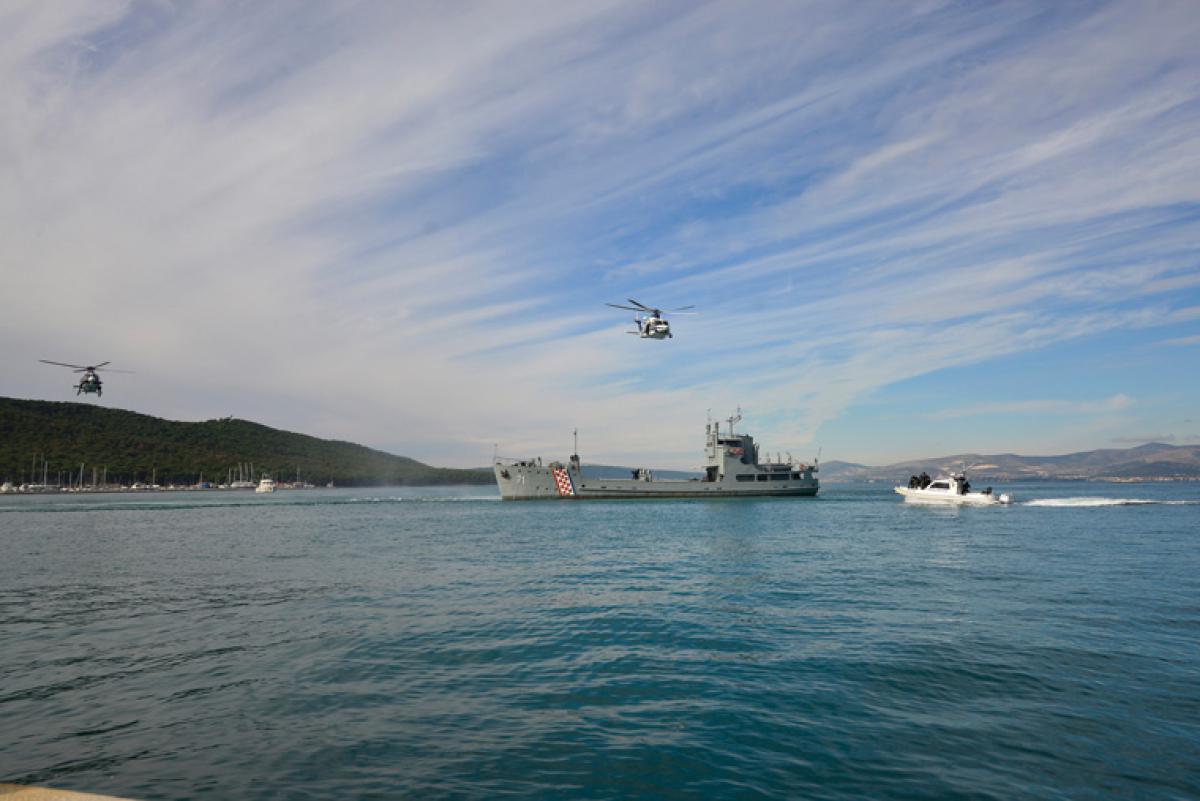The European Border and Coast Guard Agency (EBCGA) is the world’s newest coast guard. Founded by the European Union (EU) in response to the mass migration of refugees from North Africa and Syria, the EBCGA commenced operations on 6 October 2016.
Contrary to the slow, unwieldy EU bureaucracies, the EBCGA was established in record time. The vision for the service can be traced to the 9 September 2015 State of the Union speech by European Commission President Jean-Claude Juncker, which set as a first priority addressing the refugee crisis. Three months later, the European Commission delivered to the European Parliament draft legislation to model the new agency after the European Union’s national border patrol agency, Frontex.
The European Parliament and Council approved the EBCGA on 14 September 2016. “The way we manage our external borders directly affects the entire Schengen area [the internal EU open-borders territory], including its internal borders,” explained Robert Kalinák, Deputy Prime Minister and Minister of the Interior of Slovakia and President of the Council. “The European Border and Coast Guard will help us better face today’s challenges together. Only with effective management of our external borders can we return to normality within Schengen. There is no other way.”
The EBCGA is headquartered in Warsaw, Poland, and led by a civilian executive director. Its first executive director is Fabrice Leggeri, a former official at France’s Ministry of the Interior and former head of Frontex. According to Leggeri, “The words coast guard in the name of our agency emphasizes its strong maritime dimension.”
In a time of austere budgets, the EBCGA will see increased funding over the next few years. For example, its budget is programmed to increase from €238 million (about $259 million U.S.) in 2016 to €281 million (about $306 million U.S.) in 2017 and €322 million (about $350 million U.S.) in 2020. Moreover, its staff will grow from 417 personnel in 2016 to more than 1,000 by 2020.
According to the EBCGA’s website, many of its key missions are similar to the U.S. Coast Guard’s, to include:
Monitoring migratory flows and carrying out risk analysis regarding all aspects of integrated border management
Conducting a vulnerability assessment, including assessing member states’ capacity and readiness to face threats and challenges at their external borders
Coordinating and organizing joint operations and rapid border interventions to assist member states at the external borders, including in humanitarian emergencies and rescue at sea
Supporting search and rescue operations that arise during border surveillance operations at sea
Fighting organized cross-border crime and terrorism at the external borders by supporting member states in cooperation with Europol and Eurojust
Supporting member states’ coast guard authorities through cooperation with the European Fisheries Control Agency and the European Maritime Safety Agency; providing services, information, equipment, and training and coordinating multipurpose operations
To accomplish these missions, the EBCGA will have at its disposal a deployable pool of 1,500 guardsmen. In addition, the EBCGA will assign liaison officers to EU border countries.
Just five days after being established, the EBCGA held its first exercise, “Securing Europe’s External Borders,” in Split, Croatia. The exercise was designed to enhance jointness between Croatia’s maritime border police and the national navy and coast guard. Upcoming key milestones for the EBCGA include:
7 December 2016: Rapid reaction pool of at least 1,500 border guards and staff and rapid reaction equipment pool become operational
By December 2016: 50 new recruitments in the agency
7 January 2017: Return pools become operational
January-March 2017: First vulnerability assessments
The new EBCGA would benefit from an enhanced partnership with the U.S. Coast Guard. Unfortunately, requests for theater security cooperation from allies and friends far outnumber the resources the U.S. Coast Guard has available to perform such valuable training and mentoring to newly formed coast guards.
Jim Dolbow is editor of The Coast Guardsman’s Manual, 10th edition, published by the Naval Institute Press, and a former member of the U.S. Naval Institute’s Editorial Board.




